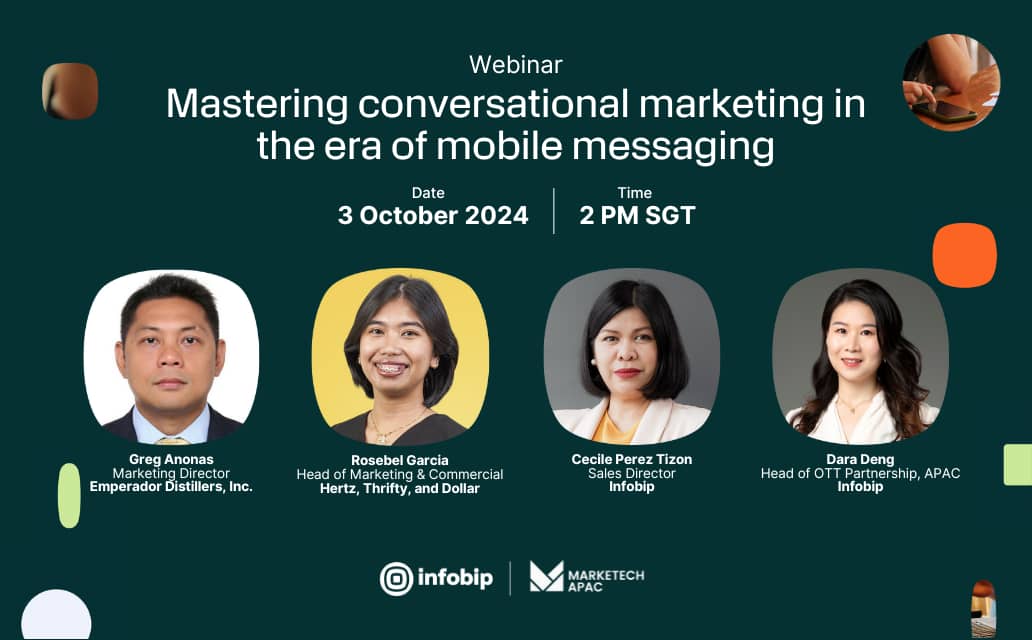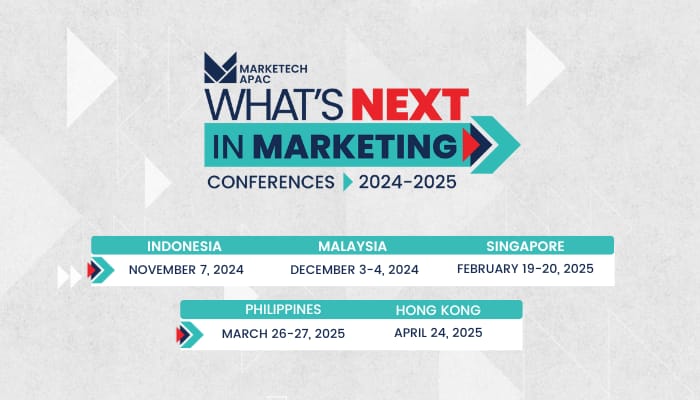Conversational marketing is certainly a game-changing strategy for businesses looking to engage with customers in real-time, fostering stronger relationships and delivering personalised experiences. Unlike traditional marketing methods, which can often feel impersonal and static, conversational marketing allows businesses to interact directly with consumers, creating a two-way dialogue that encourages trust and builds loyalty.
Whether through chatbots or live customer service representatives, these conversations provide businesses with valuable insights into consumer behaviour while allowing customers to receive timely responses to their queries. In today’s fast-paced, digital world, this personalised interaction is crucial for businesses aiming to stand out and meet the evolving needs of their audience.
In addition, mobile messaging platforms like Facebook Messenger, WhatsApp, Instagram, and Telegram are ideal channels for executing conversational marketing strategies. These platforms not only make it easy for brands to connect with their customers where they already spend a significant amount of time but also offer a seamless way to promote deals, product launches, and other marketing initiatives.
This trend was further highlighted in the recently concluded ‘Mastering conversational marketing in the era of mobile messaging’ webinar, which delved into the nuances of conversational marketing, demonstrating how real-time interactions can help brands build deeper, more personalised relationships with their customers.
Addressing evolving customer needs using click-to-chat ads
Kicking off the webinar was a keynote presentation from Cecile Perez Tizon, sales director for Asia-Pacific at Infobip, which highlighted the use of ads where click-to-chat can be placed in both Feed and Stories on Facebook and Instagram, as well as in Facebook Marketplace. In the presentation, she highlighted how this strategy works, given that 93% of social media marketers use paid Facebook ads, and 57% of businesses noticed that including Facebook stories to promote their products and services is crucial to their success.
While click-to-chat ads vary from one platform to another, Cecile highlights how this feature’s seamless integration and flow allows brands to guide potential customers to be converted, and give them easy access whether for inquiries or special offers. Moreover, she also highlights how new technologies, like generative AI, have helped brands to optimise their messaging channels to adopt personalised prompts to users.
“Chat has evolved so much [that] we even have generative AI assisting in providing content that is useful and efficient in providing us with answers to our curiosity, so if there are questions [such as] colour, size, shape, or whatever options, it can be provided [easily] on chat,” she said.
Moreover, aside from AI-powered responses, she also highlighted how click-to-chat also simplifies offering an easy catalogue of products and services to customers, as well as supporting payment options–such as those from WhatsApp Payments.
Moving forward into the presentation, Cecile also highlighted that one of the primary benefits of click-to-chat ads for businesses is that it helps them to improve the value of their digital investments. This means that brands should combine advertising and messaging to enable better marketing outcomes. For her, brands always consider an investment that is optimal for results.
“In the olden days, companies knew that they had a budget for communication, so they set aside a budget for broadcast marketing campaigns and all that. But these days, after you implement all those campaigns, you use the same amount of budget to get results that is used to optimise your next batch of campaigns,” she explained.
In the case of Infobip, it has a built-in dashboard that tracks real-time data on the performance of their click-to-chat campaigns and helps brands to track the performance of their active chatbots and fine-tune them for best results.
“The main goal is to be able to track the performance of the communications so you can see all the users that you have–all the unique users that you’ve gained, the new ones, and the old ones that are not engaged. You can think on the side when you do your planning ‘how can we form better content, a different kind of call out’ to make sure that [the] marketing or ads entice these non-engaged statistics to be part of the engaged and converting [them,” she added.
How industry leaders should transform CX through conversational marketing
Next up on the webinar was a panel discussion featuring industry leaders Greg Anonas, international wine and food marketing director at Emperador Distillers, Inc.; Rosebel Garcia, head of marketing & commercial at Hertz, Thrifty, and Dollar; and Dara Deng, head of OTT partnerships for APAC at Infobip as they discussed how to build stronger customer relationships and loyalty, as well as seamless customer journey through personalised strategies and effective communication. The discussion was moderated by Katherine Sy, regional head of content at MARKETECH APAC.
When asked about one word that defines conversational marketing, Greg said ‘precision’ referring to how these new solutions allow brands to specifically target specific consumers and make them feel they are getting interacted by the brands personally; while Rosebel shared ‘digital’ referring to how digital platforms have become hubs for brand personalisation and interactions; and Dara sharing ‘interactive’ referring to how brands are actively brainstorming ways to bring customers closer through meaningful and personalised conversations.
Greg opened up the conversation by sharing an example of their conversational marketing about how their partner, liquor delivery service Boozy.ph, keeps the brand updated with a link to sales after a digital conversation with a customer; as well as their ‘digital sommelier’ service, which gives users a chance to ask questions about the perfect alcoholic beverage to pair with their food. In short, these strategies are their way to also generate sales through genuine connections.
“When you think of the sales funnel, you think of where people come in and where you eventually want to lead them. So the goal really is to make a sale,” he said.
He also highlighted the importance of how engaging customer journeys will spell the future of conversational marketing, stating, “User journey is the future of conversational marketing that we are seeking for. After you make the sales you can also measure the consumer sentiment and how reassured they are that they made the right choice.”
Meanwhile, Dara commented that the ultimate goal for a technological provider like Infobip is to make sure their solutions fit to the demands of one industry compared to another–from finance to F&B, retail and consumer brands.
“When we talk about conversational experience, we are talking about how to build personalised and right chats to be interactive with the brands. This is kind of very difficult and this is a question that we keep in mind for the business to think about: ‘how do I view that’ and ‘do I have the tools and platforms to view that,” she said.
Dara also added the three key layers of an ideal SAS system: marketing automation, chatbot level, and customer support platform.
For Rosebel, she shared that ultimately, conversational marketing strategies play around the company’s goal of expanding its customer base and market visibility. In their case as a car rental company, as the company lost a huge customer base during the pandemic, they opened a new subsidiary offering cheaper rental options for customers.
“We measure customer success by addressing our customer pain points and eventually launching a new product and improving our brands through these conversations that we have made [with customers],” she said.
Greg also highlighted how the easiest measure for a brand’s customer success story is sales–and in their own case, since they own a digital platform they can see how often they repeat purchases. He notes that making the sale for the first time is always considered a trial, but brands need to eventually want to bring customers to repeat purchases.
“After awareness, you need to be able to drive trial and conversion. Once they are converted, you need to make sure that they keep coming back to you. For us marketing people–it’s not rocket science–what we’re really after is to get people to not only try our product but to continue consuming or going back to our services,” he explained.
In terms of what type of data should be collected by brands, Dara explained that this all depends on what specific analytics a brand wants amidst a sea of data.
“We can think about how do we reutilise this data that we collected and then re-engage them and have better conversion towards better sales and results, as well as better ROI. Additionally, this data can be used to turn existing customers to be more loyal or to leverage this to redesign my next campaign which is more focused on a particular pattern,” she said.
The webinar was attended by 144 attendees representing brands such as 2GO Express Inc, AIA, Doctor Anywhere, HSBC, Lazada, Love Bonito, Prudential Assurance Company, Trip.com, Tyro Payments, Watsons, and more.
If you missed attending it, you can catch the on-demand access to the webinar, where brands explore strategies to boost customer engagement and loyalty. Register HERE for free.

















